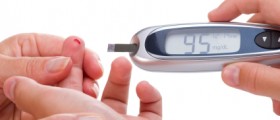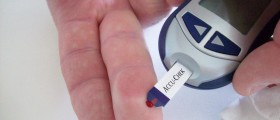
Diabetes, also called hyperglycemic hyperosmolar nonketotic syndrome, is a condition marked by very high levels of glucose in the blood due to an insufficient amount of insulin, or due to the body’s inability to use insulin.
Diabetic coma is a very serious condition where diabetes causes unconsciousness. In the majority of cases, a diabetic coma occurs in people who suffer from type 2 diabetes, where the pancreas produces sufficient amounts of the hormone insulin but the body’s cells do not recognize it, thus causing high blood sugar levels. On the other side, in people suffering from type 1 diabetes, the pancreas, due to several reasons, is not capable to secrete enough insulin.
Causes of diabetic coma
Hypoglycemia and hyperglycemia are responsible for the occurrence of diabetic coma. Excessive fluctuations in blood sugar levels (from the extremely low to extremely high blood sugar levels) may even lead to death. There are three major causes for the incidence of diabetic coma and they are hypoglycemia, diabetic ketoacidosis and nonketotic hyperosmolar syndrome.
Hypoglycemia is the condition that is characterized by low blood sugar levels. In that condition, the brain does not get sufficient amounts of glucose, which is the main fuel for energy. Hypoglycemia can be caused by either too little food or too high levels of insulin in the blood. Low blood sugar levels may appear in people with type 1 and type 2 diabetes. Diabetic ketoacidosis is a life threatening condition, which is also responsible for the incidence of diabetic coma, particularly in people with type 1 diabetes. In this condition, organic acid and ketones saturate in the blood. When the muscle cells cannot use glucose as a source of energy, the fat in the body is broken down into glucose and fatty acids are and then converted into ketones. The main symptoms of diabetic ketoacidosis are pain in the abdomen while urinating, loss of the appetite, increased heart rate, and shortness of breath, as well as vomiting, weakness and confusion. Nonketotic hyperosmolar syndrome is marked by too high levels of glucose in the blood and is typical of people suffering from type 2 diabetes. When this condition occurs, the blood turns thick and syrupy due to extremely high levels of glucose. If there are high levels of sugar in the body, it flows through the urine, absorbing enormous amounts of fluids of the body during the filtration process. As a result, extreme dehydration occurs, which is life threatening and should be treated immediately.
















Your thoughts on this
Loading...